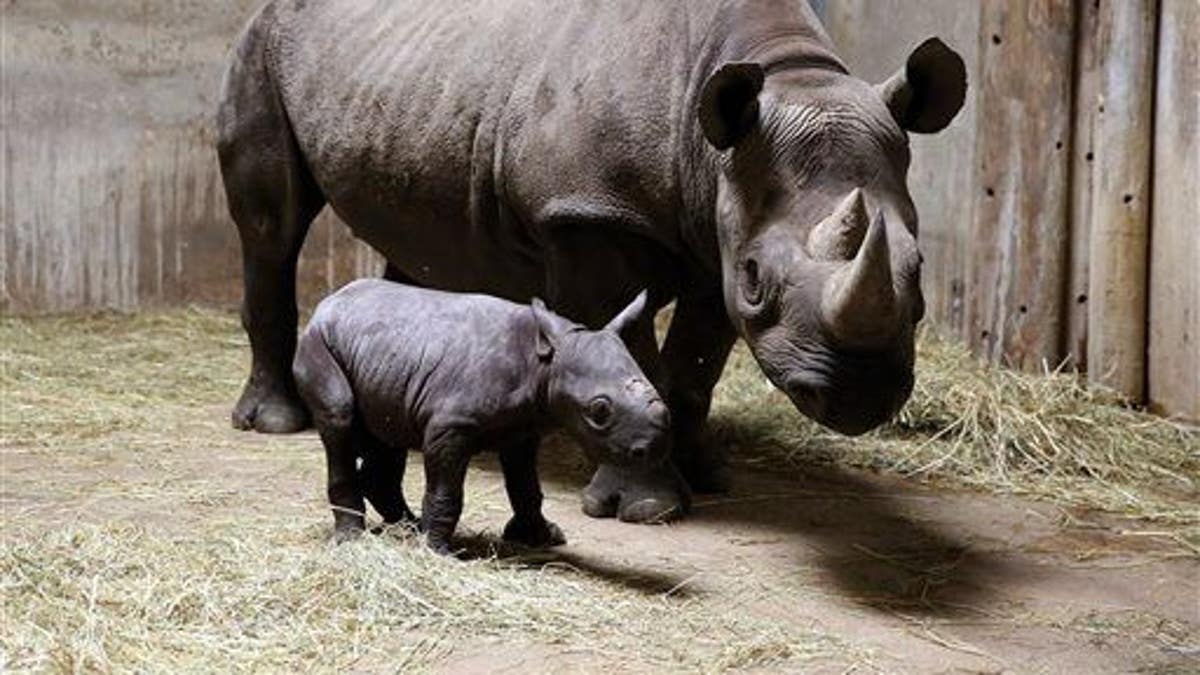
An Eastern black rhinoceros calf and its mother are shown. (AP Photo/Lincoln Park Zoo, Todd Rosenberg)
Back when the Indian subcontinent was still an island—before it joined what is now the rest of Asia—it was home to ancestors of today's horses and rhinoceroses, a new study suggests.
Both modern animals are members of a biological order known as Perissodactyla, or "odd-toed ungulates," so named because their hind feet have an odd number of toes, Johns Hopkins University news notes.
Researchers digging around a coal mine in western India found a vast collection of teeth and bones, many of which appear to have belonged to an animal called Cambaytherium thewissi, the Hindu reports.
Though the fossils, at about 54.5 million years old, aren't quite as ancient as the earliest known Perissodactyla remains, they help fill in details about the order's past.
"This is the closest thing we've found to a common ancestor of the Perissodactyla order," says scientist Ken Rose. His team's findings, the researchers write in Nature Communications, suggest "that Perissodactyla may have originated on the Indian Plate during its final drift toward Asia." (As today's rhinos struggle to survive, they did see some good news this year in Nepal.)
This article originally appeared on Newser: Horses, Rhinos Have Roots in Ancient India
More From Newser
